Abstract
African Americans have been underrepresented in clinical trials. This study was designed to determine factors that may help explain the low participation rate of African Americans in clinical trials. A historical review documented past medical experimentation and other practices on blacks that were often brutal and unethical. These experiences may have served to fortify the legacy of African-American mistrust in the medical system and culminated in the infamous Tuskegee Syphilis Study. Four major barriers to participation in clinical trials were identified: lack of awareness about trials, economic factors, communication issues, and mistrust. These barriers, as well as others, can be surmounted with proper pretrial planning, patient education, genuine commitment and concern by study staff, and hard work to overcome deficiencies.
Full text
PDF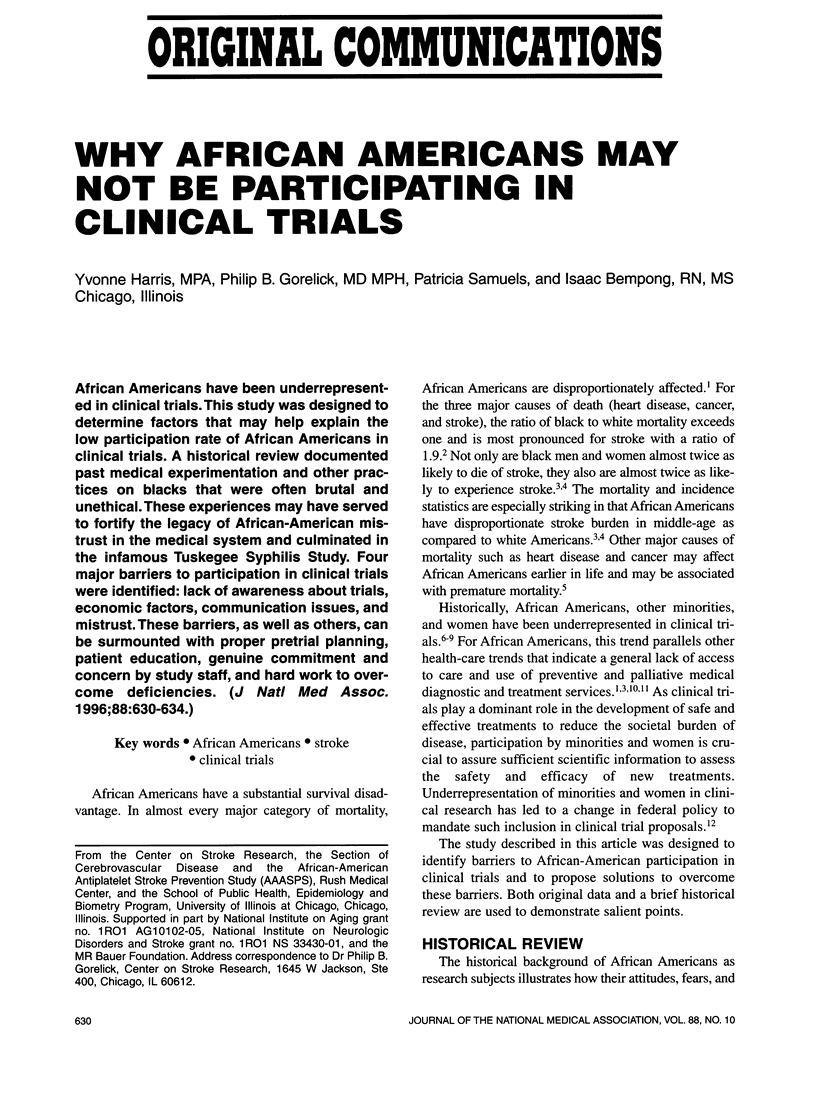
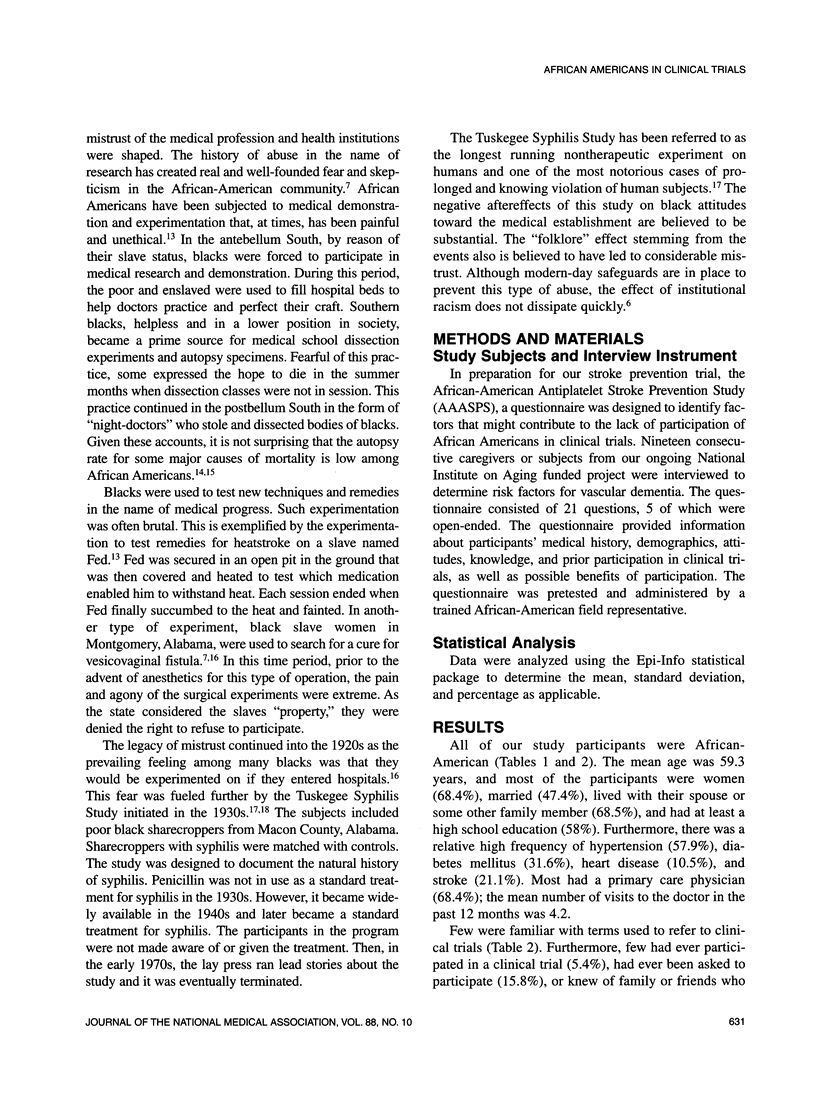
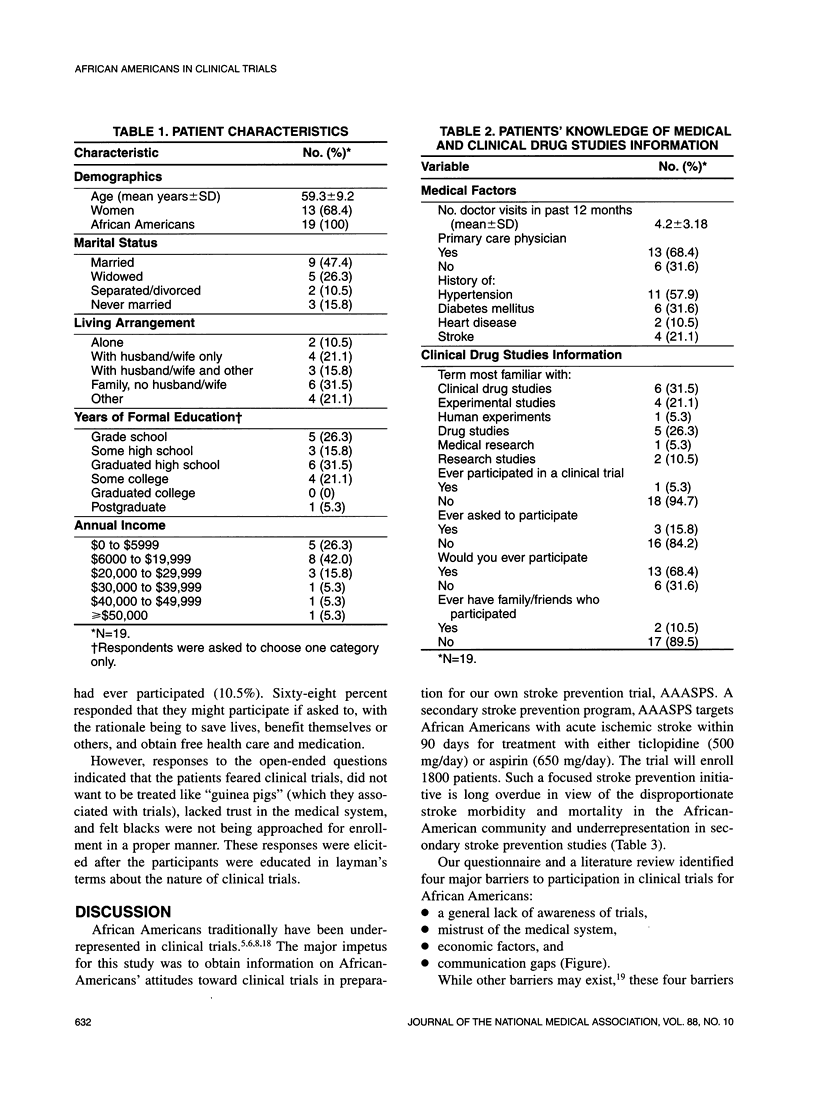
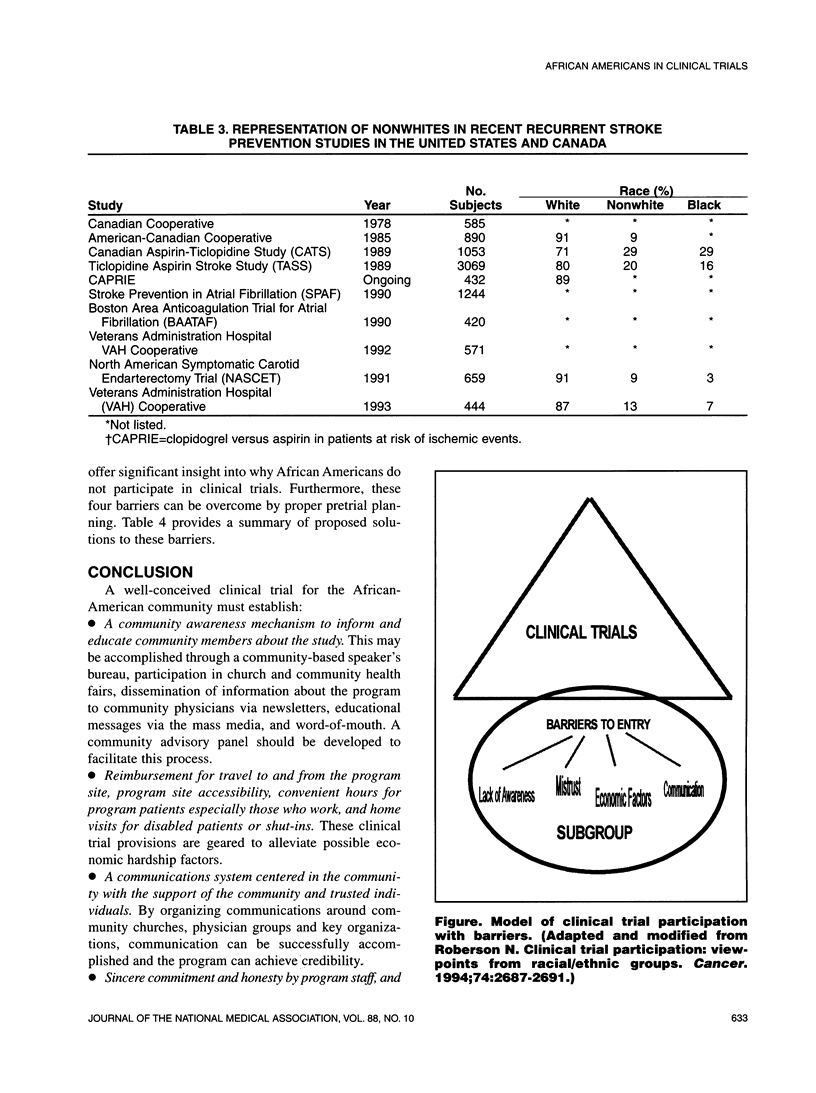
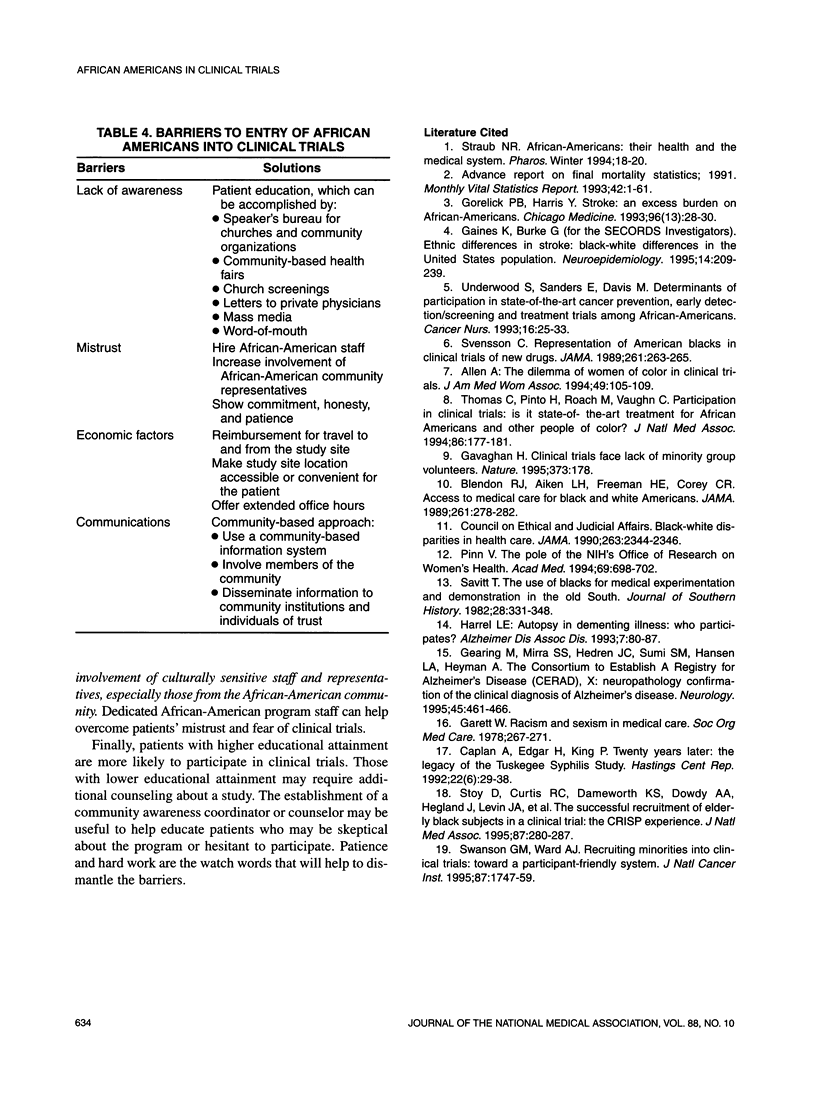
Selected References
These references are in PubMed. This may not be the complete list of references from this article.
- Allen M. The dilemma for women of color in clinical trials. J Am Med Womens Assoc. 1994 Jul-Aug;49(4):105–109. [PubMed] [Google Scholar]
- Blendon R. J., Aiken L. H., Freeman H. E., Corey C. R. Access to medical care for black and white Americans. A matter of continuing concern. JAMA. 1989 Jan 13;261(2):278–281. [PubMed] [Google Scholar]
- Caplan A. L. Twenty years after. The legacy of the Tuskegee Syphilis Study. When evil intrudes. Hastings Cent Rep. 1992 Nov-Dec;22(6):29–32. [PubMed] [Google Scholar]
- Gaines K., Burke G. Ethnic differences in stroke: black-white differences in the United States population. SECORDS Investigators. Southeastern Consortium on Racial Differences in Stroke. Neuroepidemiology. 1995;14(5):209–239. doi: 10.1159/000109798. [DOI] [PubMed] [Google Scholar]
- Gavaghan H. Clinical trials face lack of minority group volunteers. Nature. 1995 Jan 19;373(6511):178–178. doi: 10.1038/373178a0. [DOI] [PubMed] [Google Scholar]
- Gearing M., Mirra S. S., Hedreen J. C., Sumi S. M., Hansen L. A., Heyman A. The Consortium to Establish a Registry for Alzheimer's Disease (CERAD). Part X. Neuropathology confirmation of the clinical diagnosis of Alzheimer's disease. Neurology. 1995 Mar;45(3 Pt 1):461–466. doi: 10.1212/wnl.45.3.461. [DOI] [PubMed] [Google Scholar]
- Millon-Underwood S., Sanders E., Davis M. Determinants of participation in state-of-the-art cancer prevention, early detection/screening, and treatment trials among African-Americans. Cancer Nurs. 1993 Feb;16(1):25–33. [PubMed] [Google Scholar]
- Pinn V. W. The role of the NIH's Office of Research on Women's Health. Acad Med. 1994 Sep;69(9):698–702. doi: 10.1097/00001888-199409000-00003. [DOI] [PubMed] [Google Scholar]
- Stoy D. B., Curtis R. C., Dameworth K. S., Dowdy A. A., Hegland J., Levin J. A., Sousoulas B. G. The successful recruitment of elderly black subjects in a clinical trial: the CRISP experience. Cholesterol Reduction in Seniors Program. J Natl Med Assoc. 1995 Apr;87(4):280–287. [PMC free article] [PubMed] [Google Scholar]
- Svensson C. K. Representation of American blacks in clinical trials of new drugs. JAMA. 1989 Jan 13;261(2):263–265. [PubMed] [Google Scholar]
- Swanson G. M., Ward A. J. Recruiting minorities into clinical trials: toward a participant-friendly system. J Natl Cancer Inst. 1995 Dec 6;87(23):1747–1759. doi: 10.1093/jnci/87.23.1747. [DOI] [PubMed] [Google Scholar]
- Thomas C. R., Jr, Pinto H. A., Roach M., 3rd, Vaughn C. B. Participation in clinical trials: is it state-of-the-art treatment for African Americans and other people of color? J Natl Med Assoc. 1994 Mar;86(3):177–182. [PMC free article] [PubMed] [Google Scholar]


